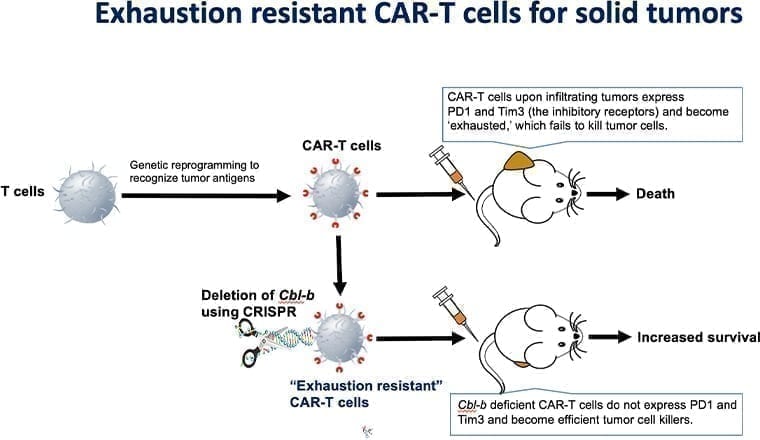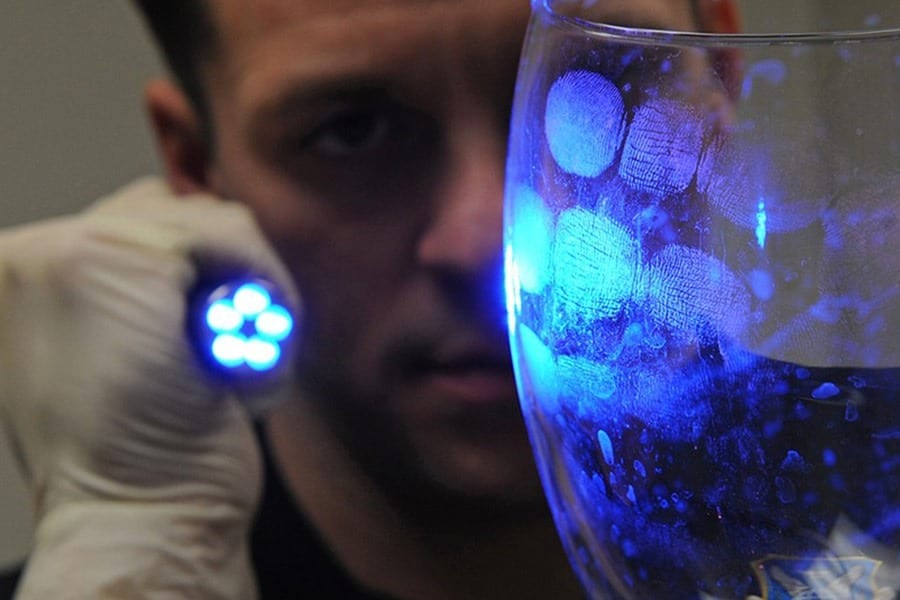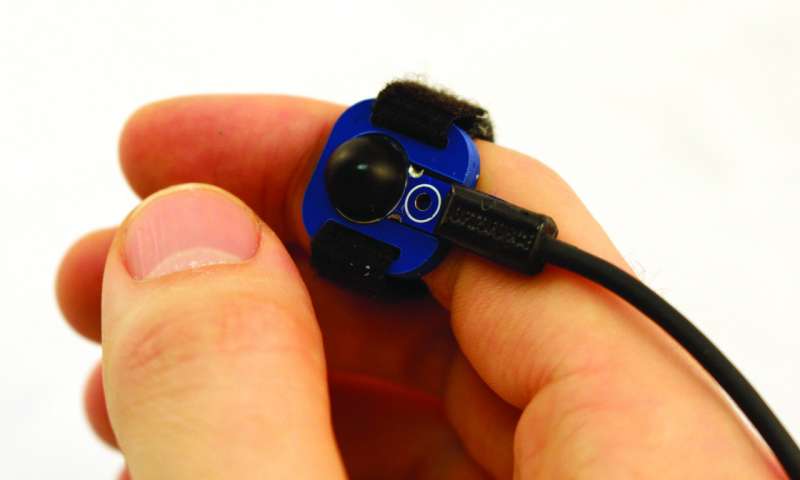
Time traveling hundreds of millions of years to unleash one of nature’s original kill switches
Small RNA molecules originally developed as a tool to study gene function trigger a mechanism hidden in every cell that forces the cell to commit suicide, reports a new Northwestern Medicine study, the first to identify molecules to trigger a fail-safe mechanism that may protect us from cancer.
The mechanism — RNA suicide molecules — can potentially be developed into a novel form of cancer therapy, the study authors said.
Cancer cells treated with the RNA molecules never become resistant to them because they simultaneously eliminate multiple genes that cancer cells need for survival.
“It’s like committing suicide by stabbing yourself, shooting yourself and jumping off a building all at the same time,” said Northwestern scientist and lead study author Marcus Peter. “You cannot survive.”
The inability of cancer cells to develop resistance to the molecules is a first, Peter said.
“This could be a major breakthrough,” noted Peter, the Tom D. Spies Professor of Cancer Metabolism at Northwestern University Feinberg School of Medicine and a member of the Robert H. Lurie Comprehensive Cancer Center of Northwestern University.
Peter and his team discovered sequences in the human genome that when converted into small double-stranded RNA molecules trigger what they believe to be an ancient kill switch in cells to prevent cancer. He has been searching for the phantom molecules with this activity for eight years.
“We think this is how multicellular organisms eliminated cancer before the development of the adaptive immune system, which is about 500 million years old,” he said. “It could be a fail safe that forces rogue cells to commit suicide. We believe it is active in every cell protecting us from cancer.”
This study, which will be published Oct. 24 in eLife, and two other new Northwestern studies in Oncotarget and Cell Cycle by the Peter group, describe the discovery of the assassin molecules present in multiple human genes and their powerful effect on cancer in mice.
Looking back hundreds of millions of years
Why are these molecules so powerful?
“Ever since life became multicellular, which could be more than 2 billion years ago, it had to deal with preventing or fighting cancer,” Peter said. “So nature must have developed a fail safe mechanism to prevent cancer or fight it the moment it forms. Otherwise, we wouldn’t still be here.”
Thus began his search for natural molecules coded in the genome that kill cancer.
“We knew they would be very hard to find,” Peter said. “The kill mechanism would only be active in a single cell the moment it becomes cancerous. It was a needle in a haystack.”
But he found them by testing a class of small RNAs, called small interfering (si)RNAs, scientists use to suppress gene activity. siRNAs are designed by taking short sequences of the gene to be targeted and converting them into double- stranded RNA. These siRNAs when introduced into cells suppress the expression of the gene they are derived from.
RNA suicide molecules could be used for a novel form of cancel therapy.
Peter found that a large number of these small RNAs derived from certain genes did not, as expected, only suppress the gene they were designed against. They also killed all cancer cells. His team discovered these special sequences are distributed throughout the human genome, embedded in multiple genes as shown in the study in Cell Cycle.
When converted to siRNAs, these sequences all act as highly trained super assassins. They kill the cells by simultaneously eliminating the genes required for cell survival. By taking out these survivor genes, the assassin molecule activates multiple death cell pathways in parallel.
The small RNA assassin molecules trigger a mechanism Peter calls DISE, for Death Induced by Survival gene Elimination.
Activating DISE in organisms with cancer might allow cancer cells to be eliminated. Peter’s group has evidence this form of cell death preferentially affects cancer cells with little effect on normal cells.
To test this in a treatment situation, Peter collaborated with Dr. Shad Thaxton, associate professor of urology at Feinberg, to deliver the assassin molecules via nanoparticles to mice bearing human ovarian cancer. In the treated mice, the treatment strongly reduced the tumor growth with no toxicity to the mice, reports the study in Oncotarget. Importantly, the tumors did not develop resistance to this form of cancer treatment. Peter and Thaxton are now refining the treatment to increase its efficacy.
Northwestern scientist
Peter has long been frustrated with the lack of progress in solid cancer treatment.
“The problem is cancer cells are so diverse that even though the drugs, designed to target single cancer driving genes, often initially are effective, they eventually stop working and patients succumb to the disease,” Peter said. He thinks a number of cancer cell subsets are never really affected by most targeted anticancer drugs currently used.
Most of the advanced solid cancers such as brain, lung, pancreatic or ovarian cancer have not seen an improvement in survival, Peter said.
“If you had an aggressive, metastasizing form of the disease 50 years ago, you were busted back then and you are still busted today,” he said. “Improvements are often due to better detection methods and not to better treatments.”
Cancer scientists need to listen to nature more, Peter said. Immune therapy has been a success, he noted, because it is aimed at activating an anticancer mechanism that evolution developed. Unfortunately, few cancers respond to immune therapy and only a few patients with these cancers benefit, he said.
“Our research may be tapping into one of nature’s original kill switches, and we hope the impact will affect many cancers,” he said. “Our findings could be disruptive.”
Learn more: Suicide molecules kill any cancer cell
The Latest on: RNA suicide molecules
[google_news title=”” keyword=”RNA suicide molecules ” num_posts=”10″ blurb_length=”0″ show_thumb=”left”]- Google DeepMind’s new AI can model DNA, RNA, and ‘all life’s molecules’on May 8, 2024 at 10:38 am
G oogle DeepMind is introducing an improved version of its AI model that predicts not just the structure of proteins, but also the structure of “all life’s molecules.” The work from the new model, ...
- Google Unveils A.I. for Predicting Behavior of Human Moleculeson May 8, 2024 at 7:59 am
On Wednesday, Google DeepMind, the tech giant’s central artificial intelligence lab, and Isomorphic Labs, a sister company, unveiled a more powerful version of AlphaFold, an artificial intelligence ...
- RNA News and Researchon May 5, 2024 at 5:00 pm
Nonsense-mediated RNA decay, or NMD, is an evolutionarily conserved molecular mechanism in which potentially defective messenger RNAs, or mRNAs (genetic material that instructs the body on how to ...
- Books: Suicide Noteon May 4, 2024 at 5:00 pm
Last fortnight it was read at the coroner’s inquest which pronounced her death a suicide “while the balance of her mind was disturbed.” Her letter said: “I have the feeling that I shall go ...
- The crucial role of RNA binding protein in shaping RNA structure and functionon May 2, 2024 at 5:15 am
RNA binding proteins (RBPs) play a pivotal role in shaping the structure and function of RNA molecules, serving as key regulators of various cellular processes. RNA, once considered a mere ...
- News tagged with drug moleculeson April 24, 2024 at 5:00 pm
For most human proteins, there are no small molecules known to bind them chemically (so-called "ligands"). Ligands frequently represent important starting points for drug development but this ...
- Individual polyatomic molecules are trapped in optical-tweezer arrayson April 23, 2024 at 5:00 pm
Three’s company: researchers at Harvard University have trapped individual triatomic molecules. (Courtesy: iStock/Emilija Randjelovic) Individual polyatomic molecules have been trapped in arrays of ...
- Ipsen, Skyhawk Therapeutics To Develop RNA-Modulating Molecules For Rare Neurological Disorderson April 21, 2024 at 10:16 pm
(RTTNews) - French biopharmaceutical company Ipsen SA (IPSEY) and Skyhawk Therapeutics announced an exclusive worldwide collaboration aimed at discovering and developing novel small molecules capable ...
- Vaccine breakthrough means no more chasing strainson April 15, 2024 at 12:01 pm
Instead, this relies on small, silencing RNA molecules. “A host — a person, a mouse, anyone infected— will produce small interfering RNAs as an immune response to viral infection.
- RNA Molecules in Brain Nerve Cells Display Lifelong Stabilityon April 4, 2024 at 5:00 pm
Certain RNA molecules in the nerve cells in the brain last a life time without being renewed. Neuroscientists from Friedrich-Alexander-Universität Erlangen-Nürnberg (FAU) have now demonstrated that ...
via Google News and Bing News










